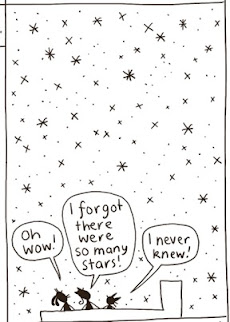A timely follow on from last week’s post on our current dystopian reality, this week, discover a new book tackling the impact of living in lockdown. Highly acclaimed children’s author/illustrator Trace Balla has just self-published The Heart of the Bubble - a story with 2020 vision set in the time of corona.
THE HEART OF THE BUBBLE is a heart-warming, family-friendly story of life under lockdown in Australia, suitable for anyone & everyone who needs their heart warmed right now.”
Trace Balla’s usual editor Elise Jones of Allen and Unwin writes “Trace’s new graphic novel with Allen &Unwin, LANDING WITH WINGS, came out *just* as the pandemic shutdown happened.” Goodbye launch, goodbye 1 million events supplying financial stability for the next ages...
So, what does she do? Makes a WHOLE NEW GRAPHIC NOVEL in record time, gets legendary publisher Erica Wagner on board as editor, and self-publishes it!!
This is the story of a family’s unexpected reconnection during the corona pandemic “lockdown”. The young girl Bimbi leads her parents from isolation to gradually adjust and reconnect with her, each other, neighbours and the outdoors… to slow down and rediscover what really matters. Bimbi manages to create a sense of community with her neighbours and those she sees regularly on their walks in the parklands. The story is filled with humour as well as poignant moments portrayed in a gentle way. There is also a sense of hope as a portrayal of how they come out the other side of the pandemic, changed to a new way of being.
Trace sees the book as a stepping stone for kids doing their own exploration and stories about this time. It’s a conversation starter for kids as there doesn’t seem to be a lot around that speaks to families apart from news which is not necessarily what parents want their children exposed to. She hopes to give the kids and a general audience some small gift of inspiration for another way of being with the current crisis… exploring what we can do as opposed to what we can’t do...
Teacher notes are available, and schools can contact Trace for bulk discounts, with ebooks being especially easy to give big discounts.
Trace Balla
Author and Illustrator
W: http://traceballa.yolasite.com/
FB: @TraceBalla https://www.facebook.com/TraceBalla/
Editor's note: All images © Trace Balla
















